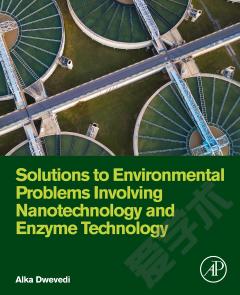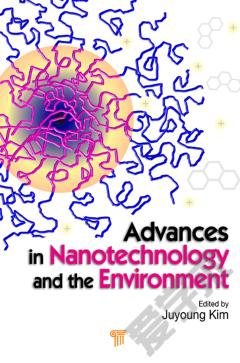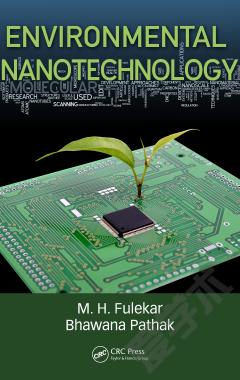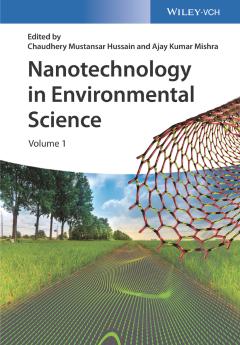Nanotechnology —— Environmental Implications and Solutions
----- 纳米科技:环境暗示和解决
Preface. Foreword by Rita D'Aquino. 1 NANOTECHNOLOGY/ENVIRONMENTAL OVERVIEW. 1.1 Introduction. 1.2 Survey of Nanotechnology Applications. 1.3 Legal Considerations for Nanotechnology by A. Calderone. 1.4 Recent Patent Activity. 1.5 Environmental Implications. 1.6 Current Environmental Regulations. 1.7 Classification and Sources of Pollutants. 1.8 Effects of Pollutants. 1.9 Text Contents. 1.10 Summary. References. 2 NANOTECHNOLOGY: TURNING BASIC SCIENCE INTO REALITY (Suzanne A. Shelley). 2.1 Introduction. 2.2 Basic Chemistry and Size-Related Properties. 2.3 Nanotechnology: Prime Materials and Manufacturing Methods. 2.4 Carbon Nanotubes and Buckyballs. 2.5 Current and Future Market Applications. 2.6 Analytical Methods. 2.7 Health and Safety Issues: Ethical, Legal, and Societal Implications. 2.8 Funding Future Developmental Efforts. 2.9 Summary. References. 3 AIR ISSUES. 3.1 Introduction. 3.2 Air Pollution Control Equipment. 3.3 Atmospheric Dispersion Modeling. 3.4 Stack Design. 3.5 Indoor Air Quality. 3.6 Monitoring Methods. 3.7 Summary. References. 4 WATER ISSUES. 4.1 Introduction. 4.2 Industrial Wastewater Management. 4.3 Municipal Wastewater Treatment. 4.4 Dispersion Modeling in Water Systems. 4.5 Monitoring Methods. 4.6 Summary. References. 5 SOLID WASTE ISSUES. 5.1 Introduction. 5.2 Industrial Waste Management. 5.3 Municipal Solid Waste Management. 5.4 Hospital Waste Management. 5.5 Nuclear Waste Management. 5.6 Metals. 5.7 Superfund. 5.8 Monitoring Methods. 5.9 Summary. References. 6 MULTIMEDIA ANALYSIS. 6.1 Introduction. 6.2 Historical Perspective. 6.3 Multimedia Application: A Chemical Plant. 6.4 Multimedia Application: Products and Services. 6.5 Multimedia Application: A Hazardous Waste Incineration Facility. 6.6 Education and Training. 6.7 Summary. References. 7 HEALTH RISK ASSESSMENT. 7.1 Introduction. 7.2 Health Risk Assessment Evaluation Process. 7.3 Why Use Risk-Based Decision Making? 7.4 Risk-Based Corrective Action Approach. 7.5 Statutory Requirements Involving Environmental Communication. 7.6 Public Perception of Risk. 7.7 Risk Communication. 7.8 Seven Cardinal Rules of Risk Communication. 7.9 Summary. References. 8 HAZARD RISK ASSESSMENT. 8.1 Introduction. 8.2 Superfund Amendments and Reauthorization of Act of 1986. 8.3 Need For Emergency Response Planning. 8.4 Emergency Planning. 8.5 Hazards Survey. 8.6 Training of Personnel. 8.7 Hazard Risk Assessment Evaluation Process. 8.8 Summary. References. 9 ETHICAL CONSIDERATIONS. 9.1 Introduction. 9.2 Air Pollution. 9.3 Water Pollution. 9.4 Solid Waste Pollution. 9.5 Health Concerns. 9.6 Hazard Concerns. 9.7 Summary. References. 10 FUTURE TRENDS. 10.1 Introduction. 10.2 Air Issues. 10.3 Water Issues. 10.4 Solid Waste Issues. 10.5 Multimedia Concerns and Hazards. 10.6 Health and Hazard Risk Assessment. 10.7 Environmental Ethics. 10.8 Environmental Audits. 10.9 ISO 14000. 10.10 Summary. References. NAME INDEX. SUBJECT INDEX.
{{comment.content}}








 京公网安备 11010802027623号
京公网安备 11010802027623号